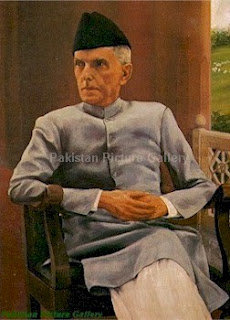SHAHEED PAKISTAN ARMY
| Captain Mohammad Sarwar, Punjab Regiment Date of Shahadat : 27th July 1948 |
| Naik Saif Ali Janjua, Azad Kashmir Regiment (Was awarded Hilal-e-Kashmir - an equivalent to Nishan-i-Haider) Date of Shahadat : 26th April 1948 |
| Major Tufail Mohammad, Punjab Regiment Date of Shahadat : 7th August 1958 |
| Major Raja Aziz Bhatti, Punjab Regiment Date of Shahadat : 12th September 1965 |
| Pilot Officer Rashid Minhas, Pakistan Air Force Date of Shahadat : 20th August 1971 |
Major Shabbir Sharif Frontier Force Regiment Date of Shahadat : 7th December 1971 |
| Sowar Mohammad Hussain, Armoured Corps Date of Shahadat : 10th December 1971 |
| Major Mohammad Akram, Frontier Force Regiment Date of Shahadat : 15th December 1971 |
| Lance Naik Mohammad Mahfuz, Punjab Regiment Date of Shahadat : 17th December 1971 |
| Captain Karnal Sher Khan, Sind Regiment Date of Shahadat : 7th July 1999 |
| Havildar Lalak Jan, Northern Light Infantry Date of Shahadat : 7th July 1999 |
DETAILS:
Total Population of PAKISTAN: 187,342,721 [2011]
Population Available: 93,351,401 [2011]
Fit for Military Service: 75,326,989 [2011]
Reaching Military Age Annually: 4,342,629 [2011]
Active Military Personnel: 617,000 [2011]
Active Military Reserve: 515,500 [2011]
TRIBUTE TO PAKISTANI ARMY
LAST WORDS:
Even in his last moments, Khan Liaqat Ali Khan was thinking of his nation. Other then remembering God and reciting the kalima, his last words were “Allah Pakistan ko apni amaan main rakhay “(God keep Pakistan under His protection)
Courtesy Rahat Minhas: this is conversation between Pilot Officer Rashid Minhas and air control at PAF Base Masroor around 1130 am on August 20, 1971 (transcript below).
Rashid's aircraft, whose call sign was 166, got hijacked and he crashed it in order to prevent its crossing into India (it was carrying only him and the hijacker). He was posthumously awarded the highest military award, Nishan-i-Haider, and this recording was broadcast in a radio documentary about him soon afterwards.
A visitor ("PureHoney") has kindly provided the following transcript although some of the words may still be doubtful:
0:23 "166 is Hijacked" (Rashid Minhas Shaheed)
0:30 "166 Hijacked" (Rashid Minhas Shaheed)
0:38 "Hijacked by whom, over" (Control Tower)
0:40 "166 is Hijacked" (Rashid Minhas Shaheed)
0:42 "Hijacked by whom" (Control Tower)
0:50 "By whom, over" (Control Tower)
0:52 "166 is Hijacked" (Rashid Minhas Shaheed)
Rashid's aircraft, whose call sign was 166, got hijacked and he crashed it in order to prevent its crossing into India (it was carrying only him and the hijacker). He was posthumously awarded the highest military award, Nishan-i-Haider, and this recording was broadcast in a radio documentary about him soon afterwards.
A visitor ("PureHoney") has kindly provided the following transcript although some of the words may still be doubtful:
0:23 "166 is Hijacked" (Rashid Minhas Shaheed)
0:30 "166 Hijacked" (Rashid Minhas Shaheed)
0:38 "Hijacked by whom, over" (Control Tower)
0:40 "166 is Hijacked" (Rashid Minhas Shaheed)
0:42 "Hijacked by whom" (Control Tower)
0:50 "By whom, over" (Control Tower)
0:52 "166 is Hijacked" (Rashid Minhas Shaheed)
Great were those who lead their lives for their country Pakistan. We will never forget what they have done for the safety of this beloved country. A special tribute to those mothers who start training their sons from his first day. We salute those soldiers who always fought from the front.
PAKISTAN ZINDABAD




























